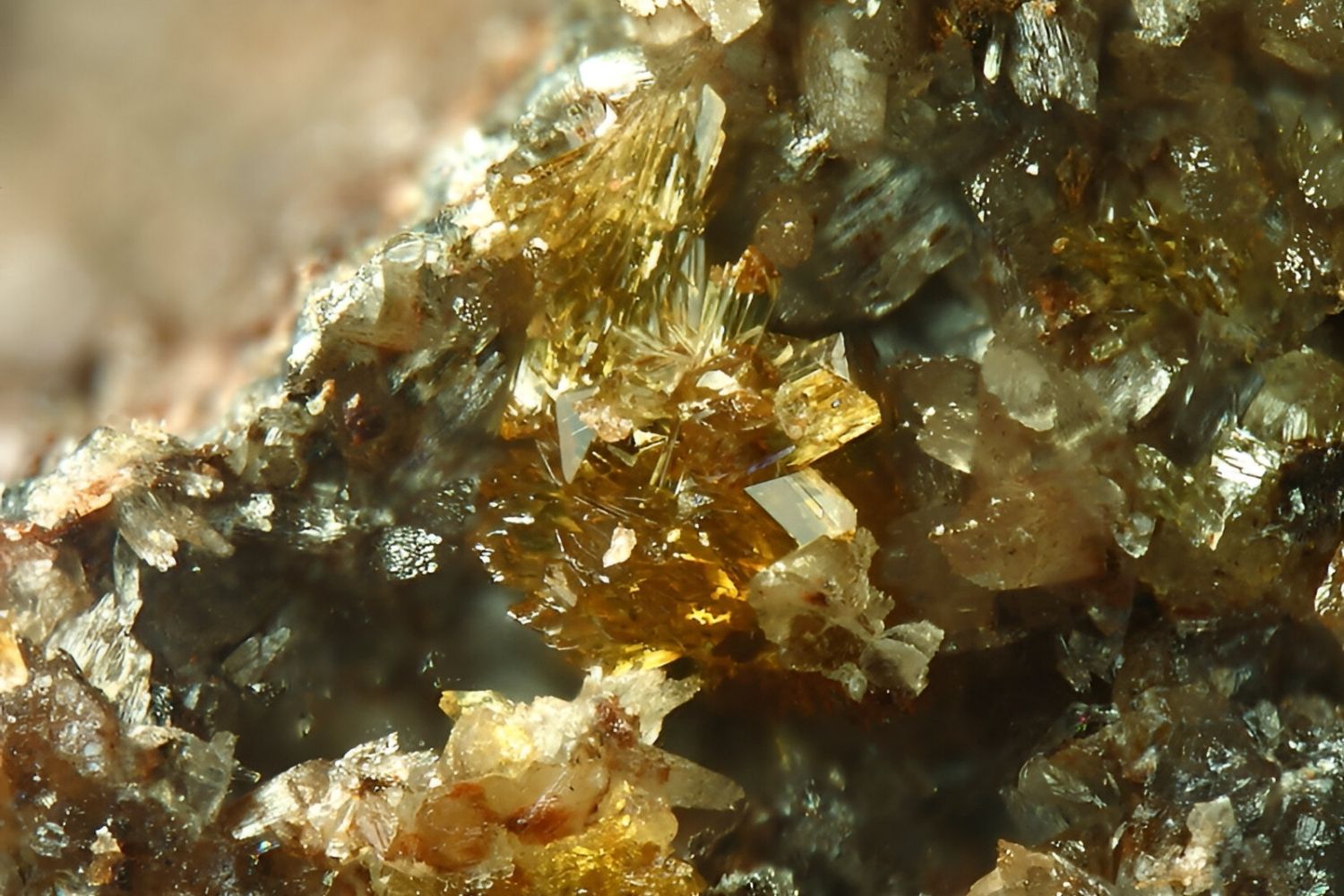
What is Triploidite? Triploidite is a rare mineral that often catches the eye of geologists and collectors alike. Composed of iron, manganese, and phosphate, this mineral typically forms in pegmatites, which are coarse-grained igneous rocks. Its colors range from reddish-brown to yellowish-brown, making it visually striking. Triploidite is often found alongside other minerals like apatite and quartz, adding to its allure. Discovered in 1878, it was named for its threefold symmetry in crystal structure. While not commonly used in commercial applications, its unique properties make it a subject of interest in mineralogical studies. Want to know more? Here are 30 fascinating facts about Triploidite that will deepen your understanding of this intriguing mineral.
Key Takeaways:
- Triploidite is a rare and fascinating mineral with a unique crystal structure and a range of colors. It's found in pegmatites and has applications in geological research and even jewelry, making it a prized collector's item.
- Found in specific geological environments, triploidite can fluoresce under ultraviolet light and is often confused with similar minerals. Its discovery site, the Branchville Quarry, remains a popular spot for mineral enthusiasts and geologists.
What is Triploidite?
Triploidite is a fascinating mineral with unique properties and a rich history. Let's dive into some intriguing facts about this mineral.
- Triploidite is a rare phosphate mineral that belongs to the triphylite group.
- It was first discovered in 1878 in the Branchville Quarry, Connecticut, USA.
- The name "triploidite" comes from the Greek words "tri" (three) and "ploion" (vessel), referring to its crystal structure.
- Triploidite typically forms in pegmatites, which are coarse-grained igneous rocks.
- Its chemical formula is (Mn,Fe)2(PO4)(OH), indicating it contains manganese, iron, phosphate, and hydroxide.
Physical Properties of Triploidite
Understanding the physical properties of triploidite helps in identifying and studying this mineral.
- Triploidite crystals are usually prismatic and can be elongated or short.
- The mineral has a hardness of 4.5 to 5 on the Mohs scale, making it relatively soft.
- It exhibits a vitreous to greasy luster, giving it a shiny appearance.
- Triploidite's color ranges from yellowish-brown to reddish-brown, depending on its iron content.
- It has a specific gravity of 3.4 to 3.8, which is considered average for minerals.
Chemical Composition and Variations
The chemical makeup of triploidite can vary, leading to different properties and appearances.
- Manganese and iron are the primary elements in triploidite, with manganese often being more dominant.
- The presence of iron can cause the mineral to appear darker in color.
- Triploidite can contain trace amounts of other elements like magnesium and calcium.
- The mineral is part of a solid solution series with wolfeite, where iron gradually replaces manganese.
- Hydroxide ions in triploidite's structure contribute to its stability and formation.
Geological Occurrence
Triploidite is found in specific geological environments, often associated with other minerals.
- It commonly occurs in granitic pegmatites, which are rich in rare minerals.
- Triploidite can also be found in metamorphic rocks, particularly those that have undergone high-grade metamorphism.
- Notable locations for triploidite include the USA, Brazil, Sweden, and Namibia.
- It is often associated with minerals like triphylite, lithiophilite, and apatite.
- The mineral can form through hydrothermal processes, where hot, mineral-rich water alters existing rocks.
Uses and Applications
While not widely used, triploidite has some interesting applications and uses.
- Triploidite is primarily a collector's mineral, prized for its rarity and unique properties.
- It can be used in geological research to understand pegmatite formation and mineralogy.
- Some specimens of triploidite are cut and polished for use in jewelry, although this is rare.
- The mineral's phosphate content makes it of interest in the study of phosphate deposits and their formation.
- Triploidite can also be used as an indicator mineral in mining exploration, helping to locate other valuable minerals.
Interesting Facts and Trivia
Here are some fun and lesser-known facts about triploidite.
- Triploidite crystals can sometimes exhibit twinning, where two crystals grow together in a specific orientation.
- The mineral can fluoresce under ultraviolet light, showing a weak yellowish glow.
- Triploidite is often confused with other minerals like triphylite and lithiophilite due to their similar appearance.
- Collectors value triploidite specimens with well-formed crystals and vibrant colors.
- The Branchville Quarry, where triploidite was first discovered, is still a popular site for mineral collectors and geologists.
Final Thoughts on Triploidite
Triploidite, a rare and fascinating mineral, has captured the interest of geologists and collectors alike. Its unique crystal structure and vibrant colors make it a standout in the world of minerals. Found primarily in pegmatites, this mineral often forms alongside other phosphate minerals, adding to its allure. Despite its rarity, triploidite's distinct characteristics make it a valuable specimen for study and collection. Whether you're a seasoned geologist or a curious enthusiast, triploidite offers a glimpse into the complex and beautiful world of mineralogy. Its presence in various locations around the globe highlights the diverse and intricate processes that shape our planet. So next time you come across a piece of triploidite, take a moment to appreciate the natural wonder and scientific intrigue it represents.
Frequently Asked Questions
Was this page helpful?
Our commitment to delivering trustworthy and engaging content is at the heart of what we do. Each fact on our site is contributed by real users like you, bringing a wealth of diverse insights and information. To ensure the highest standards of accuracy and reliability, our dedicated editors meticulously review each submission. This process guarantees that the facts we share are not only fascinating but also credible. Trust in our commitment to quality and authenticity as you explore and learn with us.
